Tamara Efrat creates smocked bags using Photoshop-like computer program
Israeli designer Tamara Efrat has combined traditional smocking embroidery with computational algorithms to create a range of patterned bags.
The 18 Crafted Technology bags all feature unique patterns, generated by a program developed by Efrat in partnership with Moran Mizrahi and Amit Zoran from the School of Computer Science at Hebrew University of Jerusalem.
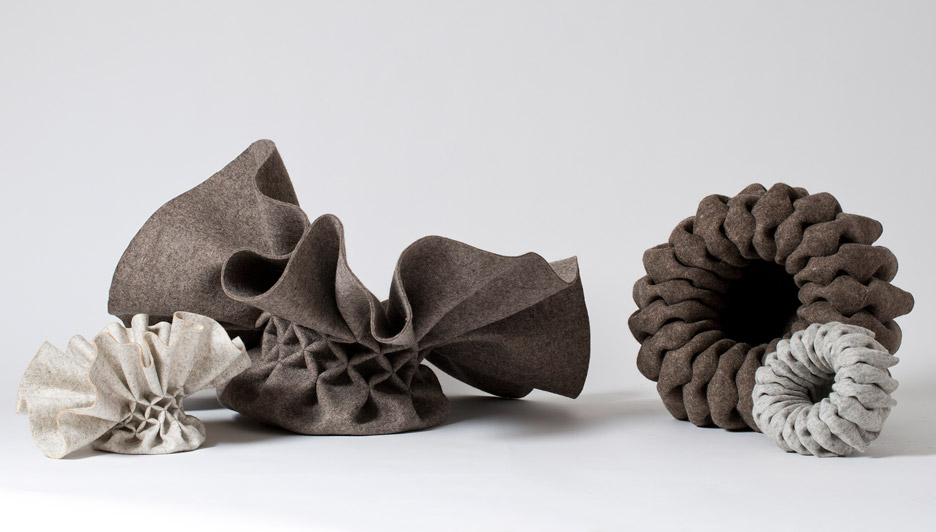
Smocking embroidery dates back to the 18th century, when it was invented to add elasticity to labourer's clothes. The bunching was added to strategic parts of garments to allow more limb movement.
When elastic fabrics were developed in the 19th century, smock embroidery began to be used as a decorative feature, but has since fallen out of favour.
"Since it is based on a grid made of dots, we regard it as a primitive algorithm, so it was very convenient for parametric and computer work," Efrat told Dezeen.
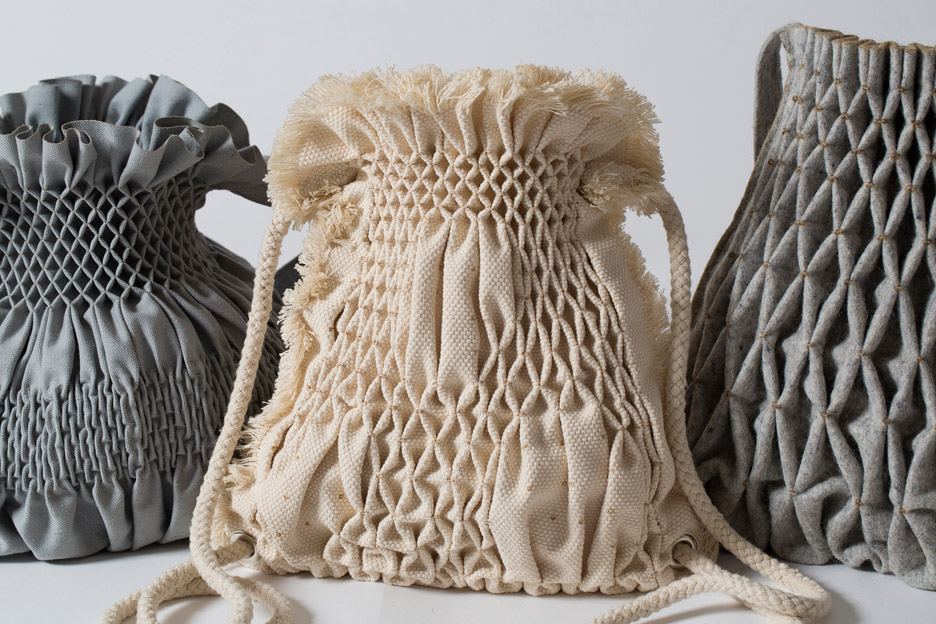
"We conducted a mathematical research of this embroidery and defined the functions that we wanted to get," she added.
The team developed eight algorithms that would change the final shape of the fabric by influencing different qualities such as elasticity, axial movement and structural strength.
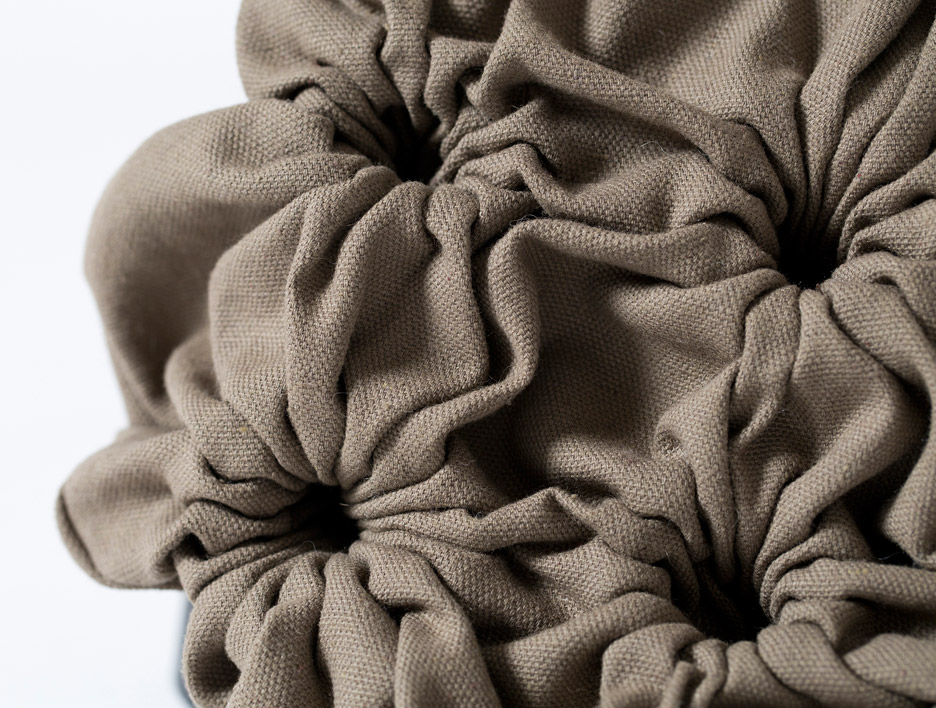
The group then developed a catalogue to showcase the algorithms, with photos that explain how it can be used and what effect it has on the material.
"We wanted to make a platform that can provide accessibility for designers and craftsmen to use digital and parametric tools," Efrat told Dezeen.
The final software looks like an embroidery-specific version of image editing program Photoshop. Users can select the type of design they want and drag it onto the bag template, where it can be enlarged, made smaller, or transformed into different patterns.
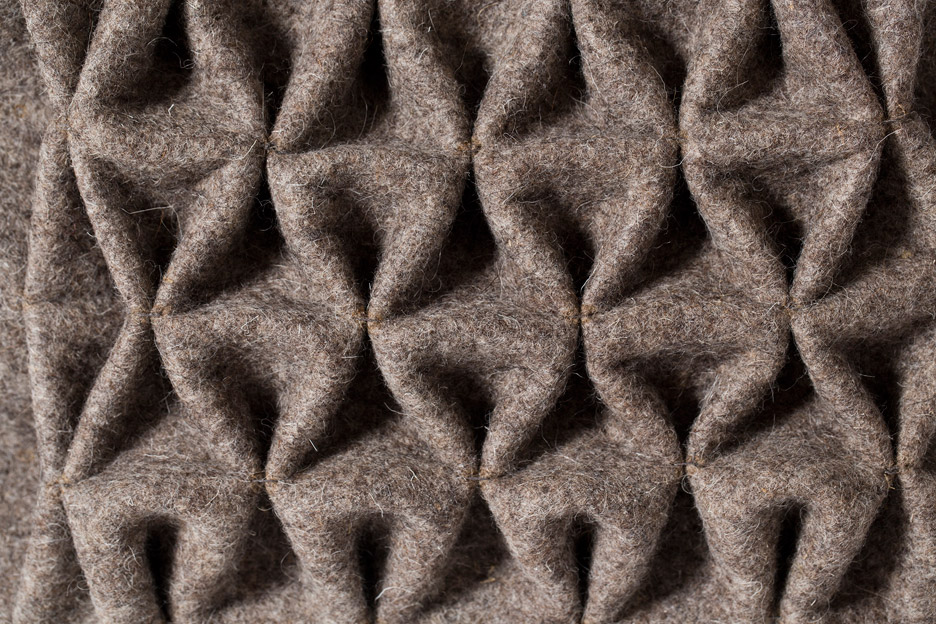
The software generates a design file, which can be used to burn the pattern onto the fabric using a laser. The material is then hand-sewn following these instructions.
"The 2D computer map becomes a 3D embroidery and as such turned into an object," said Efrat. "The decision to begin with a line of bags is arbitrary. It could be just as well other accessories, clothes, furniture or architectural fragments."
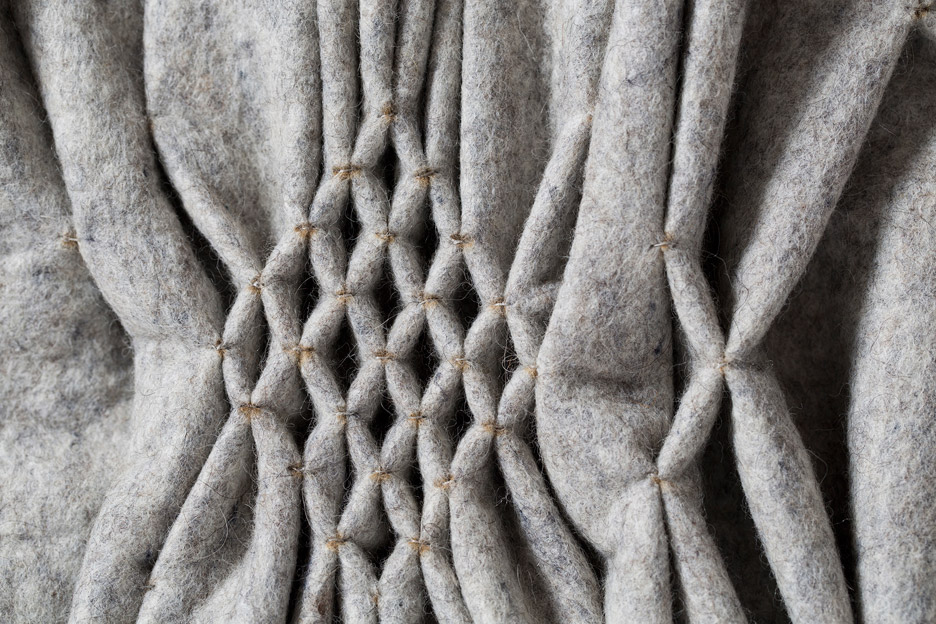
"The project deals with the questions of the object's use as a means of communication between the world of design and the world of computers, and the way in which such communication can provide a platform for the reexamination and reuse of craft," she added.
Custhom also paired traditional embroidery techniques with technology, in a collection of digitally-stitched wallpaper, while Doshi Levien paid tribute to traditional Indian folk embroidery with a set of intricate rugs.